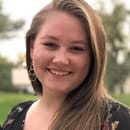Minimalism seems to have become one of the hallmarks of the millennial generation, and I am no exception. Marie Kondo came into our lives with The Life-Changing Magic of Tidying Up, and everyone and their mother started clearing out their homes. Just search “decluttering” on YouTube, and you will be overwhelmed by the number of videos available for you to watch. Although Marie Kondo does not preach minimalism, she has contributed to the general gravitation toward a more minimalist society. Other symptoms of this change can be seen in tiny houses rising in popularity, Scandinavian style interiors, and mid-century modern style.
As someone who struggles with chronic anxiety and depression, minimalism offers me a form of relief and freedom from my material possessions. It helps me focus on experiences over things– a credo my mother used while she raised me. She told me we could either afford a video game system or a vacation…I always chose the holiday.
I am by no means a minimalist yet, but my journey toward a decluttered life has taken me in some unexpected directions. Specifically it has taken me toward eco-minimalism, a form of minimalism that focuses on sustainable living rather than simply owning less. In other words, it preaches not only consuming less but also making smarter choices about the items one does consume.
Now, I have no intention of being a minimalist with stark walls, all-white everything, and the uncanny ability to live out of a suitcase. I like art and photos that make me happy, and I love having color in my life. I have carefully curated the collections in my life that I know are the most important to me, andI have no interest in ridding myself of them. Yet, I still strive toward achieving the eco-minimalist lifestyle I’ve been raised to believe in.
My transition started small: refillable water bottles and coffee cups, a menstrual cup, and transitioning from driving a car to work to using public transportation or riding my bike. These changes were made primarily out of financial necessity but became part of a personal trend toward reducing my daily consumption. Over the last year, I have begun decluttering my 360 square foot apartment by donating much of what I have never used in the past four years.. It wasn’t until I started to actually clear things out that I realized how many lotions, lipsticks, and cleaning products I’ve been hoarding behind the closed doors of my cabinets.
With so much clutter invading me and my space, all I could think about was the impact my purchases, as a single person, have had on the world around me. I spiraled, thinking about the energy required to produce and transport each of these items, only for them to sit in my apartment unused. That’s when I came up with my game plan: 1) use up the products I had and 2) only replace these items with sustainable options once they were gone.
It was at this moment while I was looking into sustainable swaps that I came across the term eco-minimalism. All I could think about was how accurately it described the journey ahead of me. But I also knew that real change and new habits take time, and that by making smaller incremental changes to my life, I could make this happen.
This series will cover my personal journey and experiences in attempting to become an eco-minimalist. I am by no means perfect so some things will be hard, and I will likely still make mistakes. You may have heard the quote from Anne-Marie Bonneau, “We don’t need a handful of people doing zero waste perfectly. We need millions of people doing it imperfectly.” And that’s my plan: attempt to be imperfectly sustainable by adopting a minimalist lifestyle.
I should be noted that this series is not intended to shame people that are traditional consumerists. It is purely about me and my choice to change my habits and lifestyle. I, by no means, believe I am not still a consumerist, but I’m trying to make small changes. I go to Starbucks like most other college students, but instead of using the plastic cup and straw they offer, I bring my own cup and straw.
For each part of this series, I will cover a different aspect of the changes I make in my life (from adopting specific products to creating new habits). If you have any questions, suggestions, or feel inspired to begin this journey yourself, contact me through my Instagram link in my bio!


